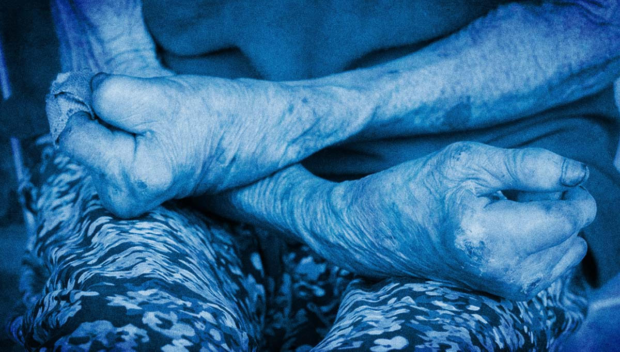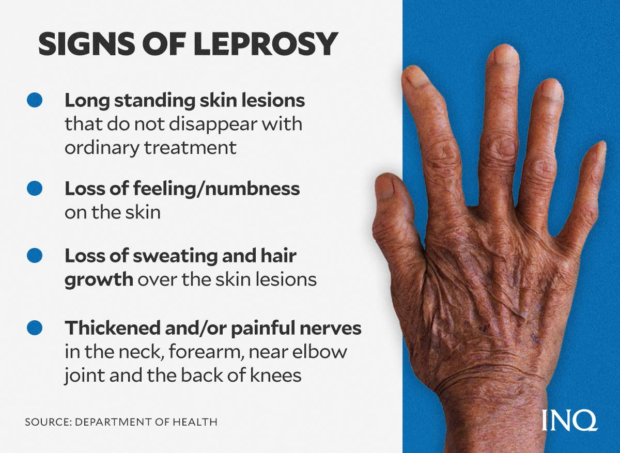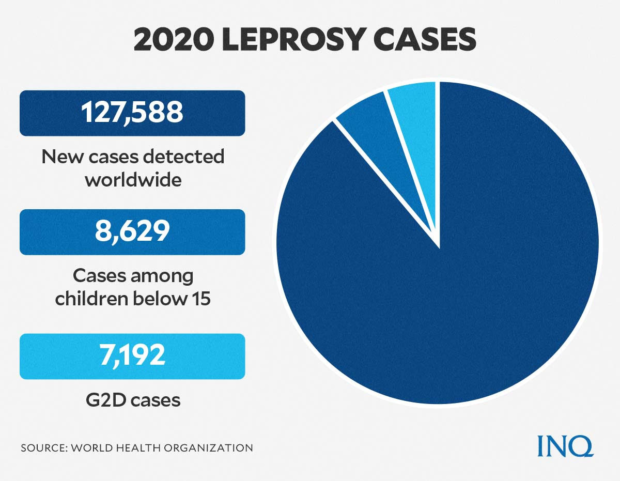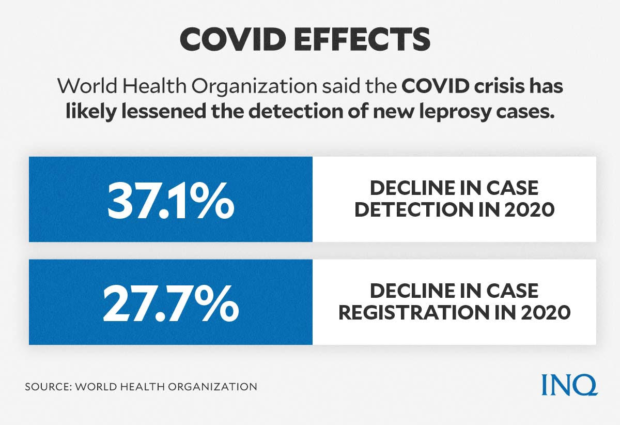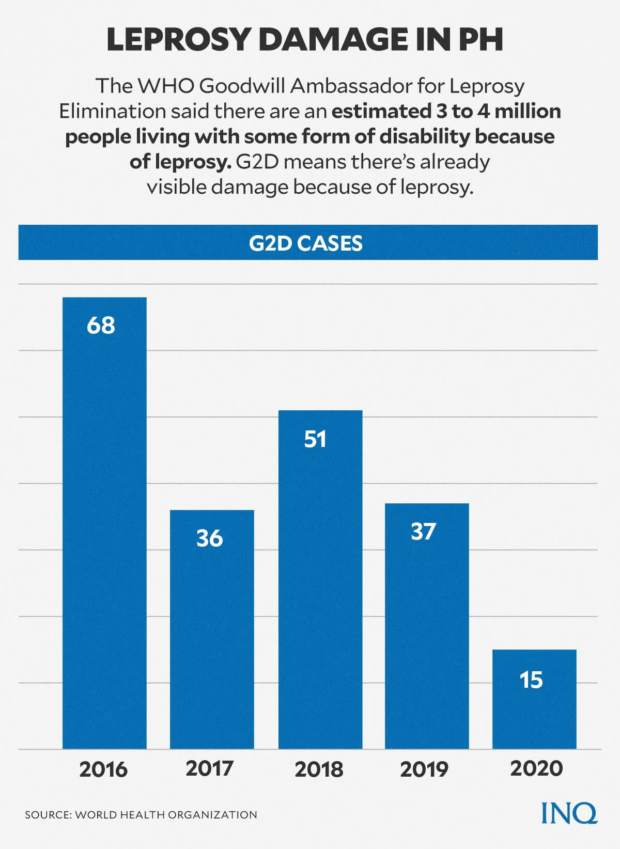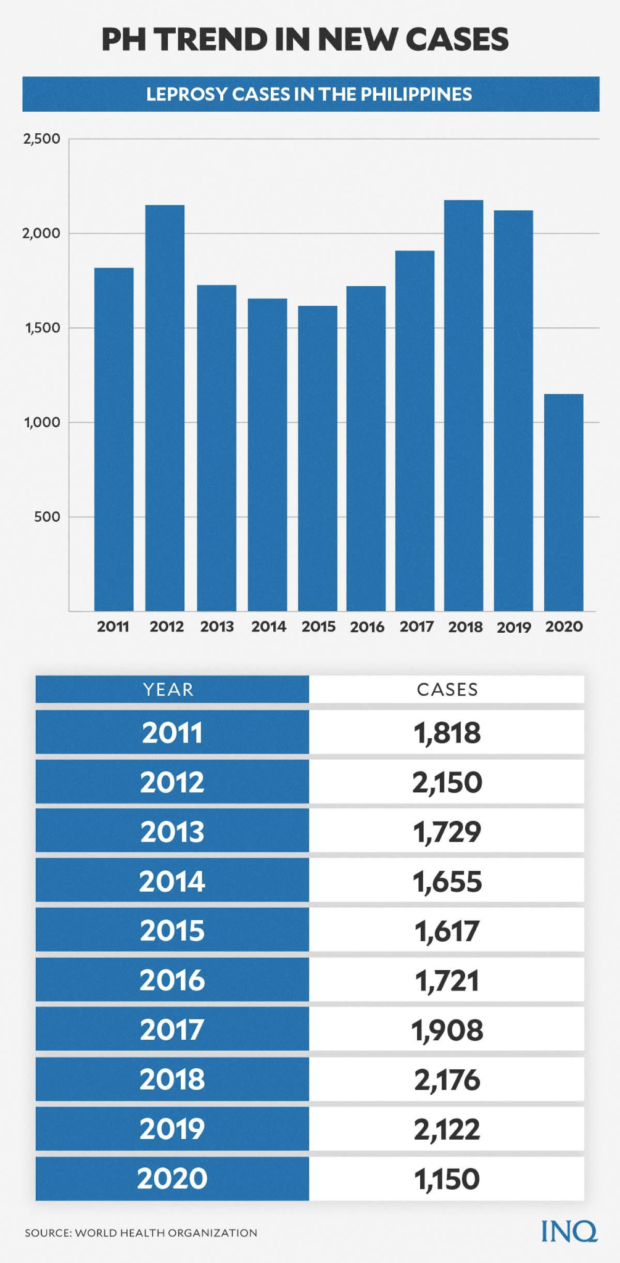World Leprosy Day: Seeking an end to age-old disease even as COVID attacks
MANILA, Philippines—As COVID-19 swept the world starting in 2020, individuals with leprosy, who are already being discriminated against because of wrong beliefs about the disease, faced increased challenges that go beyond being treated like a deadly virus.
This was the reason that last year, Yohei Sasakawa launched the “Don’t Forget Leprosy” call to keep the disease from slipping away from public view amid the COVID catastrophe and make certain that individuals with leprosy are not neglected.
Sasakawa, the World Health Organization (WHO) goodwill ambassador for the elimination of leprosy, said the lockdowns implemented by governments have made it harder for leprosy sufferers to access treatment and care.
Last Jan. 30, as the United Nations (UN) celebrated World Leprosy Day, he reiterated his call, saying that the social and economic challenges of the COVID-19 crisis have been doubly hard on people with leprosy and their families.
READ: Don’t forget leprosy
Article continues after this advertisementThe World Leprosy Day, celebrated every last Sunday of January, is a chance to remember people who have suffered from leprosy, raise awareness about the disease, and call for an end to stigma and discrimination.
Article continues after this advertisementREAD: Leprosy in PH: Treatment advances but stigma remains
What is leprosy?
Leprosy, WHO said, is a chronic infectious disease caused by the Mycobacterium leprae. The disease mainly affects the skin, the peripheral nerves, mucosa of the upper respiratory tract, and the eyes.
Its symptoms, the Department of Health (DOH) said, are long standing skin lesions that do not disappear with ordinary treatment; loss of feeling on the skin; loss of sweating and hair growth over the skin lesions and painful nerves in the neck, forearm, near elbow joint and the back of knees.
The Philippine Dermatological Society said each year, 200,000 new leprosy cases are identified worldwide while in the Philippines, 2,000 new leprosy cases are identified and treated every year.
A 2021 set of WHO data revealed that the Philippines, which is one of the 23 “global priority countries” in the fight to eliminate leprosy, had 1,150 new cases of leprosy in 2020. In 2019, there were 2,122; 2,176 in 2018; and 1,908 in 2017; 1,721 in 2016; 1,617 in 2015; 1,655 in 2014; 1,729 in 2013; 2,150 in 2012; and 1,818 in 2011.
An age-old disease, the first breakthrough in treating leprosy happened in the 1940s with the development of Dapsone. In the 1960s, however, the Mycobacterium leprae developed resistance to Dapsone.
It was in the 1960s when Rifampicin and Clofazimine were discovered and eventually added to the treatment regimen, which was later labeled as the Multi-Drug Therapy or the MDT against leprosy.
The MDT, which consists of Dapsone, Rifampicin and Clofazimine, was recommended by the WHO in 1981. This treatment lasts six months for the pauci-bacillary type of leprosy and 12 months for multi-bacillary.
Over the past 20 years, WHO said more than 16 million people with leprosy have been treated with MDT. It said new cases declined to 202,256 in 2019 and that 45 countries have reported zero new cases.
Newest cases
A 2021 set of data that was collected from 139 nations in six WHO regions—Africa, Americas, Eastern Mediterranean, European, Southeaast Asia and Western Pacific, showed that 127,558 new cases were detected in 2020.
WHO said out of the 127,558 new cases, 8,629 were those of children below the age of 15 and that the new case detection rate among children was 4.4 cases per million children.
Sasakawa said while leprosy is treatable, if detection is delayed, the disease can cause progressive impairment and lead to permanent disability or physical disabilities which WHO grades as 0, 1, and 2.
The website Science Direct defines Grades 0, 1, and 2 as these:
- Grade 0: absence of disability and no visible damage or deformities on eyes, hands and feet
- Grade 1: loss of protective sensibility in the eyes, hands or feet, but no visible damage or deformities
- Grade 2 – presence of deformities or visible damage to the eyes, visible damage on hands or feet
There were 7,198 detected Grade 2 disabilities (G2D) in 2020. The new G2D rate was recorded at 0.9 per million population. The Philippines had 15 G2D cases in 2020; 37 in 2019; 51 in 2018; 36 in 2017; and 68 in 2016.
Sasakawa said presently, an estimated 3 to 4 million people are living with some form of disability due to leprosy.
The WHO said the prevalence of leprosy in 2020 was 129,389 cases on treatment while the prevalence rate was 16.7 cases per million population.
COVID-19 strikes
While the WHO data revealed that there was a drop in new cases when COVID-19 hit—a 37.1 percent drop in new case detection and a 27.7 percent drop in registered prevalence—there’s nothing to celebrate.
Sasakawa said this was evidence that efforts against leprosy, like case detection and treatment, have been disrupted by the COVID-19 crisis. He said delays in detecting and treating cases can lead to irreversible physical impairment.
Alice Cruz, UN special rapporteur on the elimination of discrimination against people with leprosy, said last year that the COVID-19 crisis brought setbacks and that 2021 started with concerning trends.
She said there was a 50 percent decrease in the diagnosis of new cases; an increase in hidden cases; an increase in people diagnosed with irreversible physical impairments as a result of late diagnosis; and well-founded concerns over an increase in transmission rates and new cases among children.
“The COVID-19 pandemic had a significant impact on health services in all countries. Leprosy programmes were clearly affected, as evidenced by the substantial reduction in the number of cases detected and reported by countries in 2020,” said the WHO.
While essential and critical services were generally continued, the WHO said, there was a wide disruption to routine services as control programs were affected by reassignment of staff, cessation of community-based activities and active case-finding
The delays in receiving MDT supplies at national level and occasional shortage in stocks in subnational and health facility levels and limited monitoring of nerve function impairment and treatment of reaction likewise contributed to the disruption in treatment and detection.
The WHO said that in 2020, 67.3 percent of the cases were multi-bacillary, a kind of leprosy which the Center for Disease Control and Prevention said is characterized by generalized or diffuse involvement of the skin.
It was likewise revealed by the WHO that 53.2 percent of all child cases were pauci-bacillary, a kind of leprosy which is characterized by one or a few hypopigmented or hyperpigmented skin macules that exhibit loss of sensation.
The WHO said there were high rates of detection of new cases in African and Southeast Asia regions.
It revealed that in 2020, out of the 127 nations in six WHO regions, 31 reported 0 new cases; 31 reported 1-10 new cases; 16 reported 11-100 new cases; and 34 reported 101-1,000 new cases.
However, 12 nations—Philippines, Bangladesh, Democratic Republic of the Congo, Ethiopia, Madagascar, Mozambique, Myanmar, Nepal, Nigeria, Somalia, Sri Lanka and the United Republic of Tanzania—each reported 1,000-10,000 new cases.
Brazil, India, and Indonesia continued to report over 10,000 new cases each.
The WHO said the interruption in case detection may result in hidden cases and a probable increase in G2D, which may delay attainment of the goal of zero leprosy.
It had issued directives on maintaining essential services for neglected tropical diseases, like leprosy, in the midst of the COVID-19 crisis and restarting complementary activities in a conventional or modified way when circumstances permit.
RELATED STORY: Disease in PH history
TSB
For more news about the novel coronavirus click here.
What you need to know about Coronavirus.
For more information on COVID-19, call the DOH Hotline: (02) 86517800 local 1149/1150.
The Inquirer Foundation supports our healthcare frontliners and is still accepting cash donations to be deposited at Banco de Oro (BDO) current account #007960018860 or donate through PayMaya using this link.
